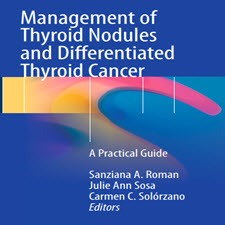CogNet: A Network Management Architecture Featuring Cognitive Capabilities
ABSTRACT
It is expected that the fifth generation mobile networks (5G) will support both human-to-human and machine-tomachine communications, connecting up to trillions of devices and reaching formidable levels of complexity and traffic volume. This brings a new set of challenges for managing the network due to the diversity and the sheer size of the network. It will be necessary for the network to largely manage itself and
deal with organisation, configuration, security, and optimisation issues. This paper proposes an architecture of an autonomic selfmanaging network based on Network Function Virtualization, which is capable of achieving or balancing objectives such as high QoS, low energy usage and operational efficiency. The main novelty of the architecture is the Cognitive Smart Engine introduced to enable Machine Learning, particularly (near) realtime learning, in order to dynamically adapt resources to the immediate requirements of the virtual network functions, while minimizing performance degradations to fulfill SLA requirements. This architecture is built within the CogNet European Horizon 2020 project, which refers to Cognitive Networks.
INTRODUCTION
Propagations of new types of devices such as smart phones and smart tablets, alone with the extensive improvement on mobile communication networks, have produced an eruption of new applications that consume resources from mobile networks and led to an explosive increase of network traffic. Meanwhile, it is expected that the machine-to-machine communication will be increased tremendously in the future to complement the dominating human-centric communication of today . This will lead to a huge diversity of communication characteristic. Both trends will raise new requirements on network scalability, data rates and more stringent latency and reliability . Present wireless-based technologies, such as high-speed packet access (HSPA), long-term evolution (LTE) and Wi-Fi are evolving continuously. The huge demand increase on network capacity, and strict and diverse requirements raised from new communication patterns may not be adequately addressed along with the evolution of ongoing existing technologies. Therefore, the investigation on the new wireless technologies is necessary in order to complement current technologies. Virtualisation will play an important role in the new generation of networks as the 5G network will need the capability to provision itself dynamically to meet changing demands on resources.
چکیده
انتظار می رود نسل پنجم نسل های تلفن همراه (5G) ارتباطات انسان با انسان و ماشین را پشتیبانی کند، اتصال به تریلیون دستگاه و دستیابی به سطوح پیچیده و حجم ترافیک. این به دلیل تنوع و ابعاد شبکه به مجموعه ای از چالش های جدید برای مدیریت شبکه منجر می شود. لازم است که شبکه عمدتا خود را اداره کند و با سازماندهی، پیکربندی، امنیت و مسائل بهینه سازی مقابله کند. این مقاله معماری یک شبکه خودمراقبتی اتوئیک را بر مبنای Virtualization Function Function ارائه می دهد که قادر به دستیابی یا تعادل بین اهداف مانند QoS بالا، مصرف انرژی کم و بهره وری عملیاتی است. نوآوری اصلی معماری Smart Engine شناخته شده است که به منظور فعال کردن ماشین آموزش، به ویژه (نزدیک) یادگیری در زمان واقعی، به منظور به صورت پویا تطبیق منابع به نیازهای فوری از عملکرد شبکه مجازی، در حالی که به حداقل رساندن تخریب عملکرد برای انجام الزامات SLA. این معماری در پروژه CogNet Europe Horizon 2020 ساخته شده است که به شبکه های شناختی اشاره دارد.
مقدمه
انتشار انواع جدیدی از دستگاهها مانند تلفنهای هوشمند و تبلتهای هوشمند، به تنهایی با پیشرفت گسترده در شبکههای ارتباطی تلفن همراه، موجب فوران برنامههای جدیدی شده است که منابع را از شبکههای تلفن همراه مصرف میکنند و منجر به افزایش انفجاری ترافیک شبکه میشود. در عین حال، انتظار می رود که ارتباطات ماشین به ماشین در آینده به شدت افزایش یابد تا مکمل کنونی غالب انسان محور باشد. این امر منجر به تنوع زیادی از ویژگی های ارتباطی خواهد شد. هر دو روند الزامات جدیدی را برای مقیاس پذیری شبکه، سرعت داده ها و تاخیر و قابلیت اطمینان بیشتر محسوب می کنند. تکنولوژی های موجود مبتنی بر بی سیم، مانند دسترسی سریع به سرعت (HSPA)، تکامل بلند مدت (LTE) و Wi-Fi به طور مداوم در حال تکامل هستند. افزایش تقاضای بزرگ در ظرفیت شبکه، و الزامات سخت و متنوعی که از الگوهای ارتباطی جدید مطرح شده، ممکن است به اندازه کافی در کنار تکامل فن آوری های موجود در حال انجام نباشد. بنابراین، تحقیق در مورد فن آوری های بی سیم جدید لازم است تا مکمل های فعلی را تضمین کند. مجازی سازی نقش مهمی در نسل جدید شبکه ها ایفا می کند، به عنوان شبکه 5G نیاز به توانایی خود را به صورت پویا برای پاسخگویی به تقاضای تغییر در منابع نیاز دارد.
Year: 2016
Publisher : IEEE
By : Lei Xu , Haytham Assem , Imen Grida Ben Yahia , Teodora Sandra Buda , Angel Martin ,Domenico Gallico , Matteo Biancani , Antonio Pastor
File Information: English Language/ 5 Page / size: 663 KB
سال : 1395
ناشر : IEEE
کاری از : لی سس، هیثام اسم، امان گریادا بن یحیی، تئودورا ساندرا بدا، فرشته مارتین، دونینکو گالیکو، متئو بیانکانی، آنتونیو پاستور
اطلاعات فایل : زبان انگلیسی / 5 صفحه / حجم : KB 663


![CogNet A Network Management Architecture[taliem.ir]](https://taliem.ir/wp-content/uploads/CogNet-A-Network-Management-Architecturetaliem.ir_.jpg)
![Network Coding Based Reliable Broadcast Protocol[taliem.ir] Network Coding Based Reliable Broadcast Protocol[taliem.ir]](https://taliem.ir/wp-content/uploads/Network-Coding-Based-Reliable-Broadcast-Protocoltaliem.ir_.jpg)
![Diagnosis.and.Management.of.Breast.Tumors.A.Practical.[taliem.ir] Diagnosis.and.Management.of.Breast.Tumors.A.Practical.[taliem.ir]](https://taliem.ir/wp-content/uploads/Diagnosis.and_.Management.of_.Breast.Tumors.A.Practical.taliem.ir_.jpg)
![Risk and risk management in management accounting and control[taliem.ir] Risk and risk management in management accounting and control[taliem.ir]](https://taliem.ir/wp-content/uploads/Risk-and-risk-management-in-management-accounting-and-controltaliem.ir_.jpg)
![Cloud Robotics[taliem.ir] Cloud Robotics[taliem.ir]](https://taliem.ir/wp-content/uploads/Cloud-Roboticstaliem.ir_.jpg)
![Auditor reputation and earnings management International evidence[taliem.ir] Auditor reputation and earnings management International evidence[taliem.ir]](https://taliem.ir/wp-content/uploads/Auditor-reputation-and-earnings-management-International-evidencetaliem.ir_.jpg)
![Management Forecasts, Idiosyncratic Risk, and the Information Environment[taliem.ir] Management Forecasts, Idiosyncratic Risk, and the Information Environment[taliem.ir]](https://taliem.ir/wp-content/uploads/Management-Forecasts-Idiosyncratic-Risk-and-the-Information-Environmenttaliem.ir_-2.jpg)
![Mining customer knowledge for tourism new product development and[taliem.ir] Mining customer knowledge for tourism new product development and[taliem.ir]](https://taliem.ir/wp-content/uploads/Mining-customer-knowledge-for-tourism-new-product-development-andtaliem.ir_.jpg)


![Four Decades of Data Mining in Network and[taliem.ir]](https://taliem.ir/wp-content/uploads/Four-Decades-of-Data-Mining-in-Network-andtaliem.ir_-150x150.jpg)
![Optimal Roadside Units Placement in Urban Areas for Vehicular Networks[taliem.ir]](https://taliem.ir/wp-content/uploads/Optimal-Roadside-Units-Placement-in-Urban-Areas-for-Vehicular-Networkstaliem.ir_-150x150.jpg)
دیدگاه خود را ثبت کنید
تمایل دارید در گفتگو شرکت کنید؟نظری بدهید!